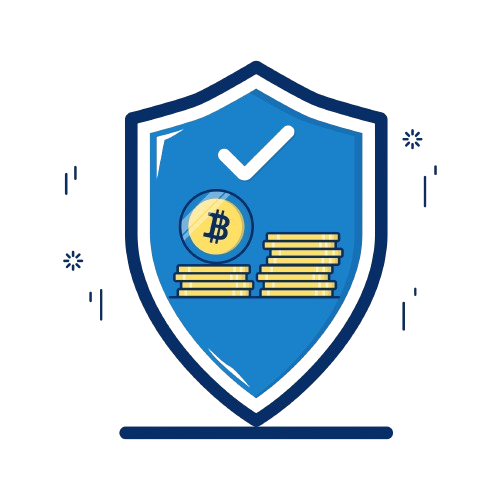
The advancement of the internet has brought us to the brink of Web3, a new paradigm that promises to revolutionize the way we interact online. Web3 is a decentralized version of the internet, powered by blockchain technology and closely tied to the world of cryptocurrency. Unlike the current web (Web2), which is dominated by centralized platforms, Web3 aims to empower users by giving them control over their data and online activities. In this context, understanding the relationship between Web3 and cryptocurrency is crucial, as they are intrinsically linked in this emerging digital landscape.
Understanding Web3
Web3 represents the next generation of the internet, where decentralization, transparency, and user empowerment are paramount. Unlike Web2, where centralized entities control most of the online services and data, Web3 leverages blockchain technology to distribute control across a network of users. This shift not only enhances security and privacy but also fosters a more equitable digital economy. Web3 aims to create an internet where users have ownership over their data and the digital assets they create or acquire.
Key Features of Web3: Decentralization and User Ownership
Decentralization is at the core of Web3. It eliminates the need for intermediaries by distributing power and decision-making across a network of nodes. This ensures that no single entity can control or manipulate the system. User ownership is another fundamental aspect. In Web3, individuals have control over their data and digital identities, often managed through cryptographic keys. This ownership model contrasts sharply with the current internet, where user data is often harvested and monetized by centralized platforms without explicit user consent.
What You Can Do with Web3?

Web3 opens up a plethora of possibilities for online interaction and commerce. Users can engage in decentralized finance (DeFi) activities, such as lending, borrowing, and trading assets without relying on traditional financial institutions.
Additionally, Web3 supports decentralized applications (dApps) that run on blockchain networks, offering services ranging from social media platforms to online marketplaces. These applications provide enhanced security and privacy, as they do not rely on centralized servers.
How Web3 Connects to Cryptocurrency?
Cryptocurrency is integral to Web3, serving as both the fuel and the incentive for its ecosystem. Blockchain technology, which underpins cryptocurrencies, is the backbone of Web3. Cryptocurrencies facilitate transactions within this decentralized environment, enabling users to exchange value without intermediaries. They also play a crucial role in incentivizing network participants, ensuring the security and functionality of decentralized networks.
Blockchain Technology as the Backbone of Web3
Blockchain technology is the foundational layer of Web3. It provides a decentralized ledger that records transactions across a network of computers, ensuring transparency and immutability. This technology enables trustless interactions, where parties can transact without needing to trust each other or a central authority. Blockchain’s ability to create secure and transparent records is essential for the decentralized nature of Web3, making it possible for users to own and control their data and digital assets.
Cryptocurrencies: The Native Currency of Web3
In the Web3 ecosystem, cryptocurrencies act as the native currency, facilitating transactions and incentivizing network participation. These digital currencies enable peer-to-peer transactions without intermediaries, reducing costs and increasing efficiency. Cryptocurrencies also play a crucial role in the governance of decentralized networks, allowing stakeholders to vote on proposals and influence the direction of the project. This democratic approach contrasts with traditional corporate structures, where decision-making is often centralized.
Smart Contracts and Their Role in Web3 Functionality

Smart contracts are self-executing agreements with the terms of the contract directly written into code. They operate on blockchain networks, enabling trustless and automated transactions. In the context of Web3, smart contracts facilitate a wide range of activities, from financial transactions to the execution of complex workflows.
They are integral to the functionality of decentralized applications (dApps), ensuring that operations are transparent, secure, and free from human error or manipulation.
Decentralized Applications (dApps) in the Web3 Ecosystem
Decentralized applications, or dApps, are software programs that run on blockchain networks. Unlike traditional apps, dApps operate without a central authority, relying on smart contracts to execute their functions. In the Web3 ecosystem, dApps offer a variety of services, including finance, gaming, social networking, and more. They provide users with greater control over their data and interactions, fostering a more open and equitable digital environment.
Tokenization and Digital Asset Ownership
Tokenization is the process of converting rights to an asset into a digital token on a blockchain. This concept is central to Web3, where digital assets can represent anything from real estate to digital art. Tokens can be easily transferred and traded, providing liquidity and accessibility to various asset classes. In Web3, users have true ownership of their digital assets, which can be securely stored in a Bitcoin wallet or other digital wallets, offering unprecedented levels of control and security.
Web3 Wallets: Gateways to the Decentralized Internet
Web3 wallets are essential tools for interacting with the decentralized internet. These digital wallets allow users to store, manage, and transfer their cryptocurrencies and digital assets securely. A Bitcoin wallet, for example, enables users to hold and transact with Bitcoin while interacting with Web3 applications. Web3 wallets also serve as gateways to decentralized applications, providing seamless access to the Web3 ecosystem and ensuring that users retain control over their private keys and digital identities.
The Intersection of DeFi and Web3
Decentralized finance, or DeFi, is a significant component of the Web3 landscape. DeFi platforms leverage blockchain technology to offer financial services without traditional intermediaries. This includes lending, borrowing, trading, and earning interest on digital assets. The integration of DeFi with Web3 enhances financial inclusivity and transparency, providing users with more control over their financial activities. DeFi’s growth is a testament to the transformative potential of Web3, showcasing how decentralized technologies can disrupt and improve existing financial systems.
Challenges and Future Prospects of Web3 and Cryptocurrencies

Despite its promise, Web3 faces several challenges that need to be addressed. Scalability remains a significant issue, as blockchain networks must handle increasing transaction volumes without compromising speed or security. Regulatory uncertainty also poses a challenge, as governments worldwide grapple with how to approach decentralized technologies. Additionally, the user experience on Web3 platforms must improve to achieve mainstream adoption.
Nevertheless, the prospects of Web3 and cryptocurrencies are bright. Continued innovation and development in this space are likely to overcome these challenges, paving the way for a more decentralized and equitable digital future.
Conclusion
Web3 represents a profound shift in how we interact with the internet, emphasizing decentralization, user ownership, and enhanced security. Its close relationship with cryptocurrency is evident, as blockchain technology underpins both concepts, providing the infrastructure for a new digital economy. Cryptocurrencies, including those stored in a Bitcoin wallet, are integral to the functioning of Web3, facilitating transactions and incentivizing network participation. As we continue to explore the possibilities of Web3, it is clear that this new paradigm has the potential to transform our digital lives, offering a more secure, transparent, and user-centric internet. The journey towards widespread adoption of Web3 and cryptocurrencies will undoubtedly be challenging, but the potential rewards make it a pursuit worth following.